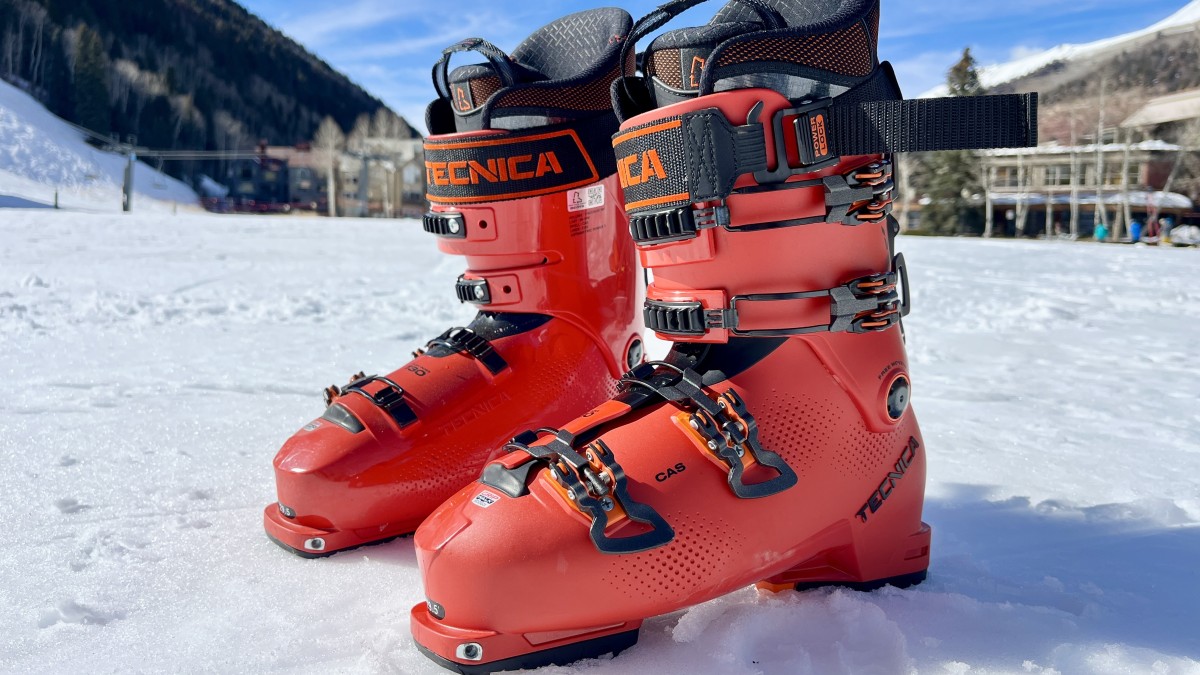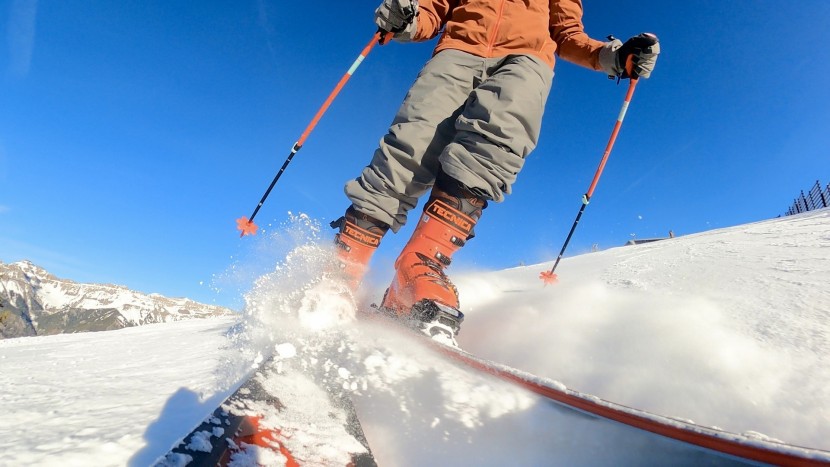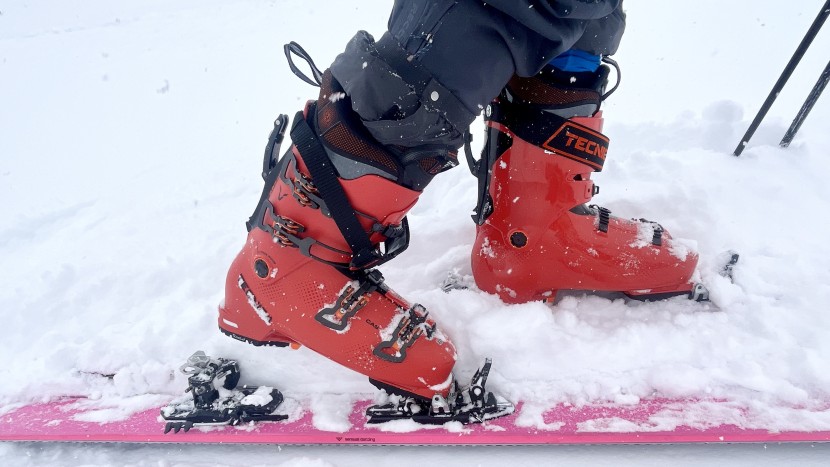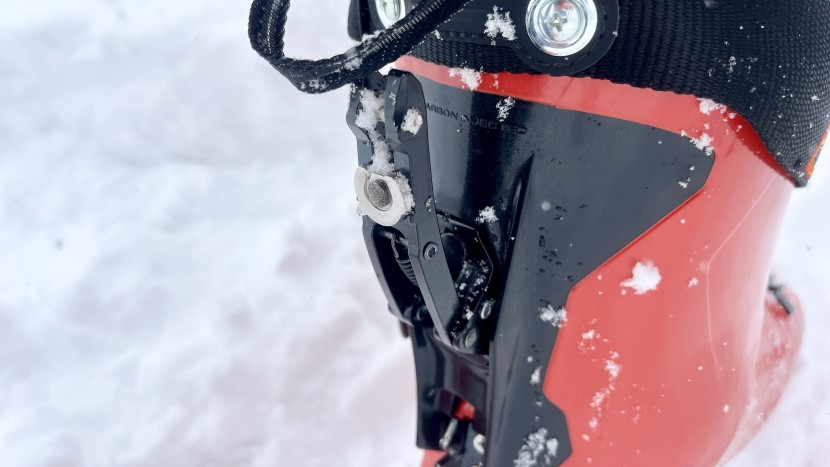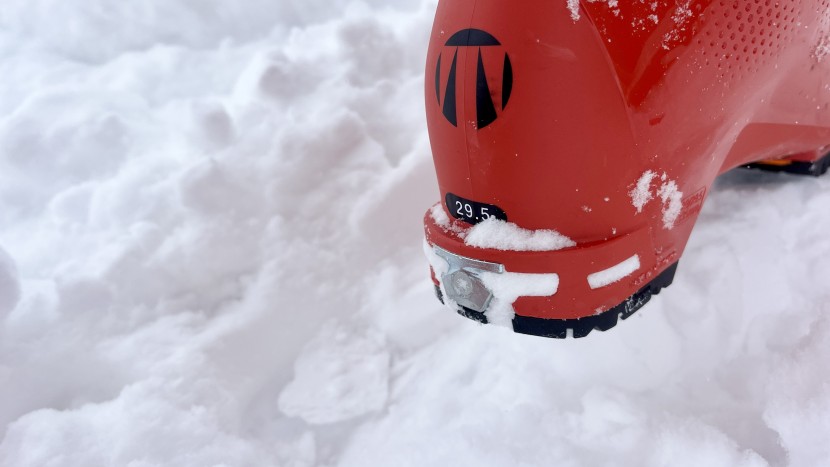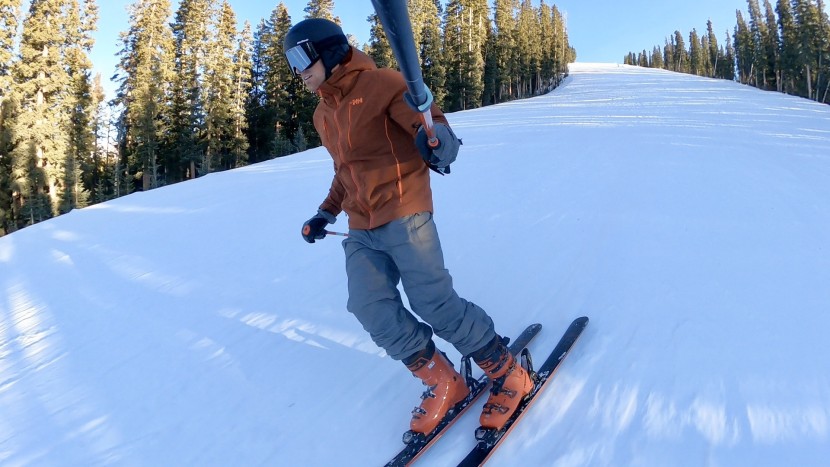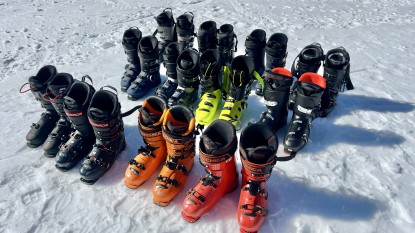
Our Verdict
Our Analysis and Test Results
Touring boots are notorious for sacrificing downhill performance in order to shave weight and increase range of motion on the uphill. The Tecnica Cochise 130 takes a different tack, emphasizing downhill performance and comfort while still featuring an integrated walk mode and tech inserts that make it compatible with touring bindings. Other alpine-focused features include Tecnica's proprietary C.A.S. ("Custom Adaptive Shape") liner and shell, which offer an excellent fit straight out of the box and are easily moldable if you need to address any issues. It's a way from a true touring boot, but for heli-skiing and lift-accessed backcountry skiing, the Cochise is an excellent choice.
Performance
This boot is a downhill machine. Thanks to a predictable, progressive flex and lateral stability, it felt like an extension of my body, easily moving my skis from edge to edge with precision and agility. The fit out of the box was perfect – the medium-volume option perfectly matched my medium-volume feet – and this performance fit only increased my control. I loved taking these boots out on the deepest days of winter when I really wanted to charge hard.
The flex is a bit softer than other 130-flex boots I tested, which is most likely due to the walk mode mechanism. (The Cochise is also available in 120- and 110-flex options.) That said, the flex progressively grew stiffer the harder I pushed these boots, and I always felt confident at high speed and in firm snow. With the low-profile power strap, I could also crank down on the cuff to increase stiffness. The walk-mode switch is easy to manipulate, and when opened up, the Cochise offered just enough range of motion to comfortably skin. It certainly doesn't tour as well as my backcountry-specific boots, but it got the job done on ascents lasting up to about an hour.
Comfort and Fit
I tested the medium volume (MV) version of this boot, which is built on a 99 mm last. However, after sharing this out to other testers with slightly wider feet, they reported that this version still fit their feet comfortably. The liner is well-cushioned and snug-fitting, and I didn't feel any pressure points. Just like other Tecnica boots, the Cochise seems to fit most skiers well, straight out of the box. If you have wide feet, all flexes (110-, 120-, and 130-flex options) also come in high-volume (HV) option, which is built on a 103 mm last.
The liner is a real winner. It's heat-moldable and is well-tailored to the anatomical shape of a foot. The specialized polyurethane shell can also be heated up for a custom shell fit, just in case you need a bit more room. The rubber Grip Walk sole and walk mode make it easier to walk around parking lots or village plazas. Considering this is one of the most comfortable boots I tested, it's also nice to know your feet won't hurt after a long bootpack.
Features
The Cochise is loaded with features. Rubber Grip Walk soles helped me feel more secure walking over ice or hardpack snow, and micro-adjustable buckles allowed me to dial in the perfect fit. The cammed power strap adds stiffness compared to hook-and-loop power straps, and the liner is as high quality as you'd expect from a high-end ski boot.
Of course, the walk mode allows for increased range of motion in the cuff, which gives you the option to take these out on the skin track. Even if you never take these boots into the backcountry, the walk mode is a nice touch if you spend a lot of time walking in your boots. (Or maybe you want to dance on tables during après!)
Tecnica includes a “fit kit,” which gives me the option to attach spacers to the liner sole to take up room, which is a great option for lower-volume feet. Similarly, there's a spacer on the outside of the liner situated on your calf, which can either take up volume or slightly increase forward lean. A RECCO chip in the liner adds searchability in the backcountry, and, of course, the boot is outfitted with tech inserts for compatibility with lightweight touring bindings.
Warmth
This winter included some truly frigid days at Telluride – I watched the mercury plummet well below 0°F on more than a few days. Remarkably, my feet never felt cold while skiing in the Cochise. While this boot generally has a snug, high-performance fit, there's plenty of room in the toe box, which allows blood to freely circulate to my toes.
Other Tecnica models with different shell compositions share the same liner with the Cochise, and I imagine it's the high-quality liner that makes this boot so warm. Surprisingly, during slushy spring skiing, my feet didn't get too hot, either. If your feet tend to be sensitive to temperature swings, these boots should take good care of you.
Should You Buy the Tecnica Cochise 130?
If you are looking for a high-performance alpine boot that is also compatible with tech bindings, look no further – this is the best hybrid boot on the market. With two different widths and three different flexes available, there should be an option in the Cochise line that's accessible to everyone. If you fall on either side of the backcountry spectrum – that is, either you never plan on ski touring, or you tour many times each season – you'll probably want a different boot. But for a single, hybrid boot that can do it all without compromising performance, the Cochise is perfectly priced for an exceptional value.
What Other Ski Boots Should You Consider?
The Cochise performs similarly to its cousin, the Tecnica Mach1 MV 130. The Mach1 is our favorite alpine ski boot, so if you only plan on downhill skiing, that's the boot we recommend. If you would like to compare hybrid models, there's the Atomic Hawx Prime XTD 130 BOA GW, but it isn't nearly as good a boot as the Cochise and costs much more. For folks who want a boot specifically for ski touring, check out our review of the best backcountry ski boots.


